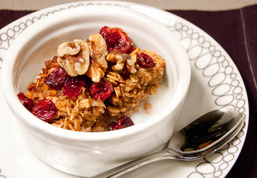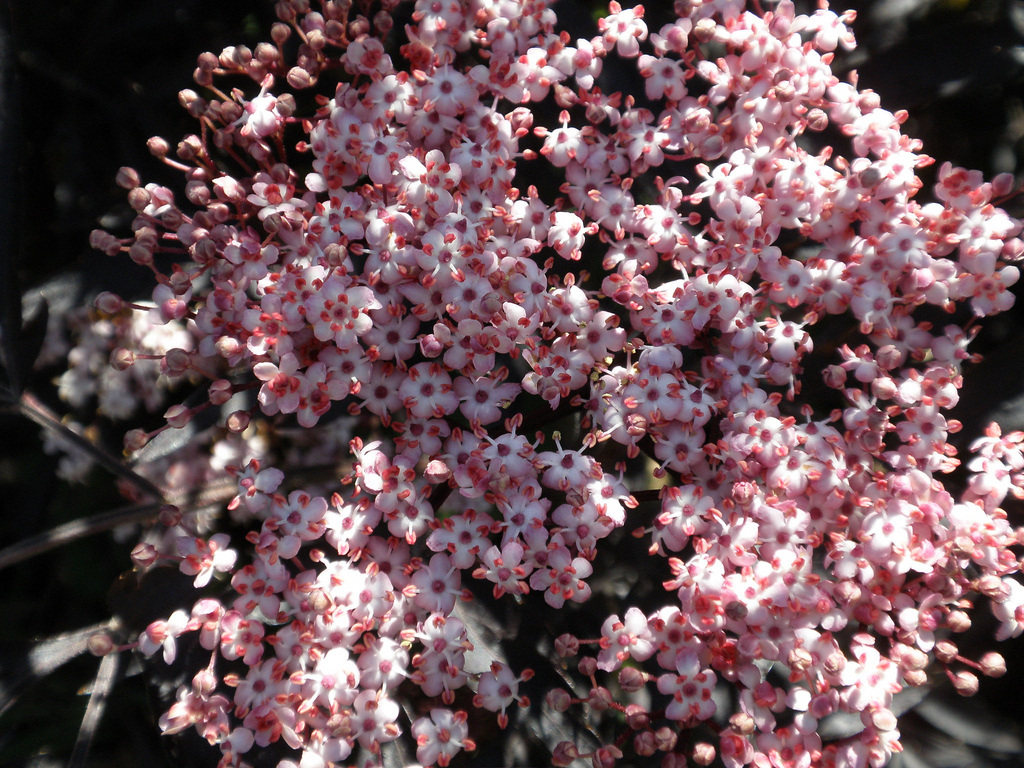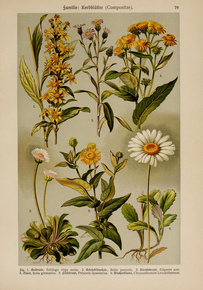 Looking for a quick and nutritious breakfast? Try some oatmeal with a little extra flavour with this recipe for blueberry almond oatmeal. The almonds and blueberries add more nutrients and brighten up those plain oats. Be sure to get the thick cut rolled oats as they are processed less than the quick cooking oats. Serves 3-4 2 cups thick rolled oats 4 cups water pinch of sea salt maple syrup or agave nectar blueberries, fresh or frozen raw almonds, ground cinnamon 1. Place oats, water and sea salt into a medium saucepan. Turn heat to medium, cook oatmeal until it begins to bubble then turn heat to low. 2. Continue stirring until oatmeal is thick and cooked, about 10 mins. 3. Grind raw almonds in a coffee grinder to a fine meal. 4. Place desired amount of oatmeal into a serving bowl, top with a little maple syrup or agave nectar, a handful of blueberries, and a tablespoon or two of ground almonds. Sprinkle with cinnamon if desired. Note: If you are gluten sensitive, be sure to check the label that the oats are gluten free. References: Segersten, A. & Malterre, T. The Whole Life Nutrition Cookbook. Blueberry Almond Oatmeal. 2nd Ed. Whole Life Press.
0 Comments
 Most of us are feeling at least a little tired of all the snow, and are thinking more and more often about spring and sunshine. However, for some of us the change of season is much more noticeable because of the huge difference it makes in our mood. It’s normal to have a few days of low mood, but if it persists for most of the winter months and you aren’t motivated to do anything you enjoy then it may be something a little bit more. Seasonal affective disorder (also called SAD) is a type of depression that occurs at the same time every year. If you're like most people with seasonal affective disorder, your symptoms start in the fall and may continue into the winter months, sapping your energy and making you feel moody. Less often, seasonal affective disorder causes depression in the spring or early summer. What are the signs of SAD?
If you think you may have SAD it is important that you discuss how you are feeling with your health care provider. SAD is considered a type of depression, which can worsen and potentially lead to thoughts of suicide. If you are having thoughts of harming yourself or others it is of the utmost importance to seek medical help immediately!
What Can We Do About SAD? Light Therapy (phototherapy) has been shown to be a very effective treatment for reducing feelings of SAD. The specialized light box mimics natural light, which seems to have an effect on brain chemistry related to mood. Most people start to respond after 2 to 4 days and causes few side effects. Conventional Treatment: If symptoms are more severe then a combination of psychotherapy and medication (eg. Zoloft or Paxil), may be employed by your doctor. Generally a medication with the fewest side effects will be chosen, and your doctor may suggest beginning the antidepressant prior to the start of your symptoms each year. Naturopathic Treatment St. John’s Wort: has been used to treat mild to moderate depression. Some studies have found St. John’s Wort to be comparable to tricyclic and SSRI (fluxotine) with fewer side effects. SAMe: synthetic form of the same substance that is made naturally in the body from a reaction between methionine (an essential amino acid) and ATP, has been shown to alleviate depression as well as the pain of osteoarthritis. Melatonin. This natural hormone helps regulate mood. A change in the season may change the level of melatonin in your body. Omega-3 fatty acids. Omega-3 fatty acid supplements may help relieve depression symptoms and have other health benefits. Sources of omega-3s include fish such as salmon, mackerel and herring. Omega-3s are also found in certain nuts and grains and in other vegetarian sources, but it isn't clear whether they have the same effect as fish oil. Lifestyle Let the sun shine in: Open the blinds, trim a few branches, add a skylight if need be. Do whatever you can to allow more natural light into the home and office. Go outside: Try and get outside during the day when the sun is shining. Take a nice walk, sit on a bench, just try and get into the natural light more often. Exercise: Regular exercise has been shown through many studies to improve mood and relieve stress and anxiety. Mind-Body Therapy All of the following have been linked to decreased feelings of depression to varying degrees: - Acupuncture - Yoga - Meditation - Guided Imagery - Massage There is no one set formula for preventing SAD, but through proper treatment and working with your health care provider you can learn to manage this condition well. Talk to your Naturopathic Doctor today about getting assessed and treated if needed, and as always talk to your health care provider before beginning any new medication or supplement. References: Godfrey A. & Saunders P.R. (2010) Principles & Practices of Naturopathic Botanical Medicine: Volume I: Botanical Monographs. Central Nervous System, pg. 161-163. CCNM Press. Mayo Clinic. Diseases and Conditions: Seasonal Affective Disorder (SAD). http://www.mayoclinic.org/diseases-conditions/seasonal-affective-disorder/basics/definition/con-20021047 Murray M. & Pizzorno, J.. (1998) Encyclopedia of Natural Medicine (2nd Ed.). Depression, pg 377-400. Three Rivers Press.  We are seeing more people, especially children, with allergies these days. There are several thoughts about why this is happening, but overall it’s generally described as a hypersensitivity or oversensitivity of the body to an external stimuli. One such theory referred to as the 'hygiene hypothesis' proposes that many children do not get sufficient exposure to a wide variety of microbes, and as result of growing up in an extremely clean environment devoid of microbes the body does not learn how to modulate the immune response effectively. Thus creating a situation where later exposure to a substance causes a hyperactive response, or allergy. There seems to be some credibility for this theory since the significant increase in individuals suffering from allergies has been mainly in the western hemisphere, and we have not seen a corresponding increase in other parts of the globe. However, as more countries become more affluent and the number of people below the poverty line decreases we are seeing an associated rise in atopic conditions such allergy and asthma there as well. In the US: · Number of people in the U.S. who have either allergy or asthma symptoms: one in five. · Percentage of the U.S. population that tests positive to one or more allergens: 55%. Internationally: The prevalence of asthma in different countries varies widely, but the disparity is narrowing due to rising prevalence in low and middle income countries and plateauing in high income countries. Symptoms: · Postnasal drip · Sniffling · Dark circles under eyes (allergic shiners) · Puffiness beneath the eyes · Restlessness · Fatigue · Poor sleep · Headaches · Behavioural problems such as irritability, hyperactivity, poor concentration, whining, and pickiness about food Chronic allergies, especially those that cause allergic rhinitis, a persistent inflammation of the mucous membranes lining the nasal passages, can lead to constant head congestion, decreased hearing ability, reduced concentration, and difficulty remaining alert. Children with allergies may frequently feel tired and irritable. Hyperactive behavior may also emerge as a result of allergies due to nervous irritability from chronic inflammatory response or the need to keep moving to stimulate endogenous adrenaline supplies. While a tendency towards allergies may be inherited, the extent to which they manifest may have more to do with dietary, emotional and environmental factors than genetic factors.
Suffering from allergies can be a very irritating experience. If you or your child is suffering from allergies, it is best to take them to a Naturopathic Doctor who can perform a proper assessment and form a treatment plan that will address your/your child’s needs. Always speak to your health care provider before beginning any new medications or supplements. References: 1. Allergy Statistics and Facts. WebMD. Reviewed by Johnson, K. (2012). http://www.webmd.com/allergies/allergy-statistics 2. Asthma Statistics. American Academy of Allergy, Asthma & Immunology. http://www.aaaai.org/about-the-aaaai/newsroom/asthma-statistics.aspx 3. Romm, A. 2003. Naturally Healthy Babies and Children: A Commonsense Guide to Herbal Remedies, Nutrition, and Health. Celestial Arts. 4. Skowron, JM. 2009. Fundamentals of Naturopathic Pediatrics. CCNM Press. Print.  February Is Heart Health Month In the spirit of reminding everyone about the importance of keeping your heart healthy, this post is going to be all about heart health and how to recognize the warning signs of heart attack. Did You Know? Every 7 minutes in Canada, someone dies from heart disease or stroke (Statistics Canada, 2011c). Heart disease and stroke are two of the three leading causes of death in Canada. These statistics are based on 2008 data (the latest year available from Statistics Canada).
What Is Heart Disease? Cardiovascular diseases are defined as diseases and injuries of the cardiovascular system: the heart, the blood vessels of the heart and the system of blood vessels (veins and arteries) throughout the body and within the brain. Stroke is the result of a blood flow problem in the brain. It is considered a form of cardiovascular disease. How Can I Tell Someone Is Having a Heart Attack? Common Symptoms - Pain in the chest/ arm, often the left arm. For women, a more common symptom is jaw/neck pain. - Stomach pain, can feel similar to heartburn - Shortness of breath - Anxiety. Some people actually describe feeling ‘an impending sense of doom’ - Lightheadedness - Sweating - Nausea and vomiting Are Symptoms Always Obvious? Most heart attacks begin with subtle symptoms — with only discomfort that often is not described as pain. The chest discomfort may come and go. Don't be tempted to downplay your symptoms or brush them off as indigestion or anxiety. Don't "tough out" heart attack symptoms for more than five minutes. Call 911 or other emergency medical services for help. If you don't have access to emergency medical services, have someone drive you to the nearest hospital. Drive yourself only as a last resort, if there are absolutely no other options. Heart attack symptoms vary widely. For instance, you may have only minor chest discomfort while someone else has excruciating pain. One thing applies to everyone, though: If you suspect you're having a heart attack, call for emergency medical help immediately. What Can Naturopathic Medicine Do for Heart Health? One of the central tenants of Naturopathic Medicine is teaching the principles of healthy living and preventative medicine. That means we work to help prevent heart disease BEFORE it happens. We can utilize many tools to help you achieve optimal health:
We'll formulate an individualized treatment plan focusing on your particular risks and needs to significantly decrease your risk of heart attack and stroke. That being said, there are also many things we can do after a heart attack or stroke to increase healing, decrease recovery time and maximize your quality of life.
Have more questions about what Naturopathic Medicine can do for you and your heart? Take advantage of our Free 15 minute consults to find out more today. References: Heart and Stroke Foundation of Canada. ‘Health Information’. http://www.heartandstroke.com/site/c.ikIQLcMWJtE/b.3484021/k.7C85/Heart_Disease.htm Mayo Clinic. Heart Attack Symptoms: Know what’s a medical emergency. http://www.mayoclinic.org/diseases-conditions/heart-attack/in-depth/heart-attack-symptoms/art-20047744 Murray M. & Pizzorno, J.. (1998) Encyclopedia of Natural Medicine (2nd Ed.). Heart Disease, pg 500-507. Three Rivers Press. Godfrey A. & Saunders P.R. (2010) Principles & Practices of Naturopathic Botanical Medicine: Volume I: Botanical Monographs. Cardiovascular System, pg. 81-138. CCNM Press.  Looking for a tasty take on ranch dressing? Try out this avocado based salad dressing that has that same creamy texture of ranch dressing, but full of healthy fats and vitamins. Avocado Salad Dressing 1 large avocado 2 teaspoons fresh lemon juice 1/2 cup greek yogurt 1 teaspoon hot sauce 1/4 cup extra virgin olive oil 2 garlic cloves 3/4 teaspoon salt You can use an immersion blender or regular blender. Make sure it is well mixed. It will have a slightly green colour when finished and a thicker consistency than ranch dressing from the store. If you want a more liquid dressing you can always add a little more olive oil or use less avocado. Add to your favourite salad or may be try it out as a raw veggie dip. Either way, have some fun and experiment with it. Enjoy! References: http://www.facebook.com/bemorefitness |
Sarah Connors
I am a Naturopathic Doctor and Doula providing care in the Kitchener-Waterloo area. I have a passion for helping people with their health issues and improving the birth experience for Moms, and their babies. I also have a life long love affair with soccer, curling, and the alto saxophone. Archives
November 2020
Categories
All
|
Photos from Rural Royalty, manu flickr2010, Ryan Dickey, wocintechchat, huskyte77, paulswansen, Black Room Photography, harum.koh, Emery Co Photo, JeepersMedia, BrownGuacamole, wellnesswildflower, JeepersMedia, vastateparksstaff, colindunn, seelensturm, /\ \/\/ /\, 50mm.za, The Simpsons (Lee, Shirley, Luke and Rachel), AGRONAUTI, aivas14, Jonathan Rolande, winnifredxoxo, juhansonin, osseous, nan palmero, Theo Crazzolara, brianfagan, TP studio, wuestenigel, torbakhopper, anka.albrecht, Michael Stern, [-ChristiaN-], franchiseopportunitiesphotos, terren in Virginia, nateOne, barnimages.com, Dun.can, wuestenigel, @lattefarsan, amandabhslater, aphrodite-in-nyc, nutritionaldoublethink, Anne Worner, donnierayjones, mikecogh, angeloangelo, Rob.Bertholf, getaiwan, Lida Rose, matsuyuki, SurFeRGiRL30, marcoverch, amsfrank, mdaltry, nutrition education, Mike Prince, Edsel L, Neighborhood Nini, philipp.alexander.ernst, Mediocre2010, homethods, quinn.anya, Gamma Man, katerha, Eric Kilby, National Institutes of Health (NIH), rcmd_cfdfw_5_2, curtis palmer, Ray in Manila, frankieleon, Airsoftpal.com, byzantiumbooks, cchana, Brian Legate, Matt Lavin, BradHinton, monpetitchouphotography, wuestenigel, alexisjordanlewis, ByEPhotos, erix!, RLHyde, return the sun, quinn.anya, mliu92, frankieleon, loudista, Lyn Lomasi, upslon, derrickbrutel, cchana, National Institutes of Health (NIH), watts_photos, marcoverch, derrickbrutel, francesbean, weegeebored, Airsoftpal.com, Etwood, wu_135, shixart1985, Ingrid Taylar, VeritasFotografie, BioDivLibrary, emmanuelmorales1, Thanks for 1.5 Million Views!!, Will Merydith, reader of the pack, RoxyHobbs, Khanelle Prod' Medias, storyvillegirl, agromonitor, Arenamontanus, six:eleven, cote, SweetOnVeg, nenoirenediaz, lucianvenutian, markhillary, anotherlunch.com, inkknife_2000, archibald jude, rawtrigger, Imaginary Museum Projects: News Tableaus, Pavel P., Courtney Emery, Thien Gretchen, physiognomist, bark, Michigan Municipal League (MML), alberth2, Merelymel13, neofob, Care_SMC, Parker Knight, B*2





 RSS Feed
RSS Feed
